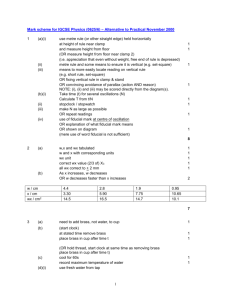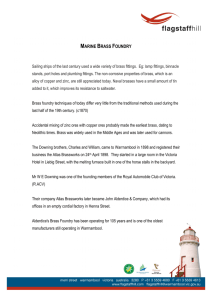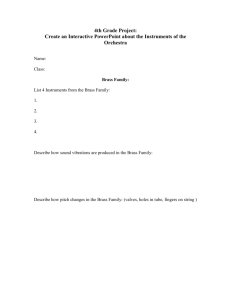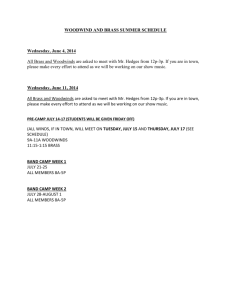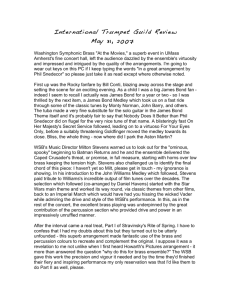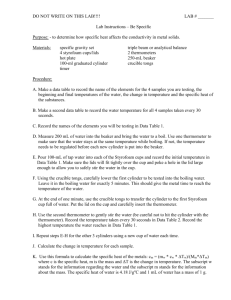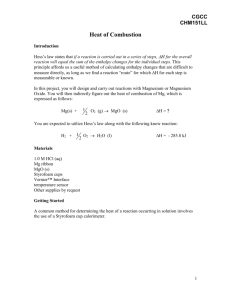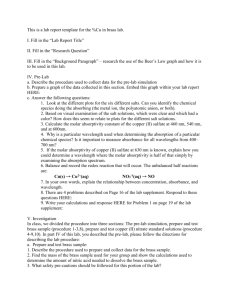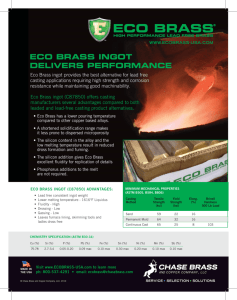Specific Heat Capacity Lab: Method of Mixtures
advertisement
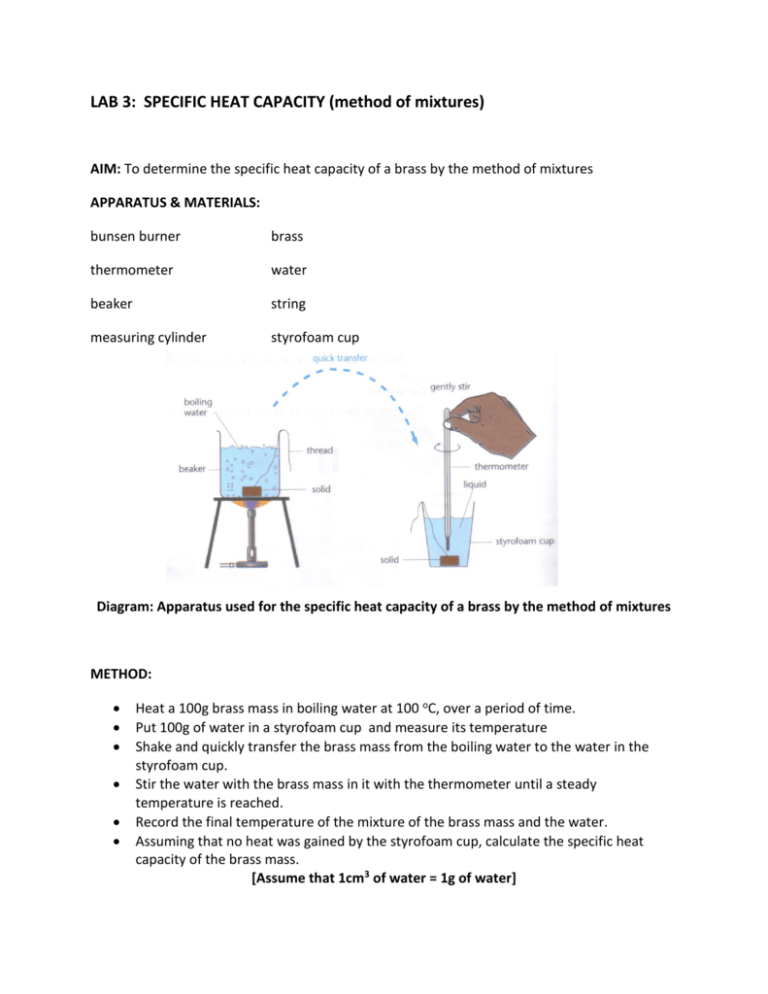
LAB 3: SPECIFIC HEAT CAPACITY (method of mixtures) AIM: To determine the specific heat capacity of a brass by the method of mixtures APPARATUS & MATERIALS: bunsen burner brass thermometer water beaker string measuring cylinder styrofoam cup Diagram: Apparatus used for the specific heat capacity of a brass by the method of mixtures METHOD: Heat a 100g brass mass in boiling water at 100 oC, over a period of time. Put 100g of water in a styrofoam cup and measure its temperature Shake and quickly transfer the brass mass from the boiling water to the water in the styrofoam cup. Stir the water with the brass mass in it with the thermometer until a steady temperature is reached. Record the final temperature of the mixture of the brass mass and the water. Assuming that no heat was gained by the styrofoam cup, calculate the specific heat capacity of the brass mass. [Assume that 1cm3 of water = 1g of water] THEORY: Define the specific heat capacity of a substance. State the formula and units. State the formula for the method of mixtures RESULTS: Record all results in a suitable table (showing all headings and units) CALCULATIONS: State formula used and show all working. (remember all units) CONCLUSION: State the specific heat capacity of the 100g brass mass. State the main assumption made in the experiment Explain why the 100g brass mass was shaken and quickly transferred into the styrofoam cup. Why was the mixture of the water and the 100g stirred with the thermometer?

